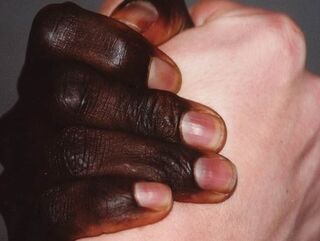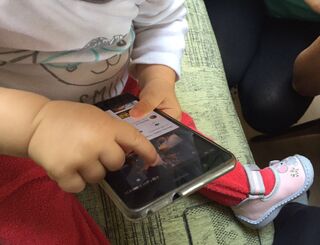Artificial Intelligence
Next Time We Zoom, Show Me Your Hands
The disproportionate focus on face is misplaced.
Posted September 9, 2020 Reviewed by Gary Drevitch
Face coverings are a new way of signalling one’s political, ideological, moral and social stance. With the blooming market of custom face masks, individuals can show which country they come from, whose art they like, or which book they have recently read. There is a lot of noise about the relationship between personal liberty and mask mandates and countries that do or do not require citizens to wear them. We need to know what type of mask works, how to wear them correctly and why. But what we are missing in the current discussions is a reflection on the exclusive focus on the human face.
The emphasis on faces has never been greater: Facebook, FaceTime, face masks. Magazine covers, profile pictures, and video calls all focus on the face. The face-lift industry is in full swing and so are facial treatments and skincare products. The introduction of facial recognition payments in some physical shops, and the (often flawed) use of facial recognition by police forces are other examples of society’s primary concern with the face. This disproportionate focus is misplaced for three main reasons.
First, for people with a visible difference (for example, people with marks, scars, and skin conditions), it contributes to social anxiety and low confidence. Second, the daily reliance on face-based communication clashes with the fact that many people want or need to cover their faces for health, religious, or personal reasons. Third, prolonged use of communication platforms that foreground users’ own faces can lead to screen fatigue and may negatively impact one's sense of identity. As we consider these points, I want to propose to shift the focus toward the hands.

The hands are one of our most distinctive features. In coronavirus times we are all more aware of who and what we touch, and our hands secure the physical connection between living and non-living objects and us. Human hands are an important source of information as well as contamination. A firm handshake is a mark of respect. How you move your hands can provide early signs of diseases like Parkinson’s and Alzheimer’s, but also clues to mental states such as fear or nervousness.

A focus on hands for communication can also be part of an inclusive ethos. The complex shape and joint structure of hands give them expressive power that is essential for social interaction, and fingerspelling is a key communication method. (British Sign Language uses a two-handed alphabet and American Sign Language uses a one-handed alphabet.)
A screen-saturated world might well prepare children for a future that demands recognition of half-covered faces and screen literacy. Children and teenagers are key users of Snapchat and surprisingly fluent with face filters, avatars, and alternative representations of self. The use of touchscreens widens children’s touch repertoire and supports their fine motor development. Technology developers have begun to realize the importance of artificial intelligence and digital hands for future interactions. Although the modeling of human grasping takes time, recent innovations show great potential for robotic hands to manage soft touch, which could be deployed for fruit picking, automated packaging, medical care, rehabilitation, and surgical robotics.
Technologies could be also used for hands-based communication: The recently launched FingerTrak uses a combination of thermal imaging and machine learning to virtually reconstruct the hand. Based on the wrist contours, FingerTrack can predict whether the individual is writing, drinking coffee, or interacting with a smartphone.
A society-wide discussion on the role of hands is in our hands: We can turn the cameras to watch the movements of each other’s hands while we Zoom. We can upload profile pictures that show our fingers or wrists. We can gradually build up a collective understanding of what a focus on different body parts can achieve. There is potential for new markets (customized gloves, for example), more thoughtful communication, and a more inclusive society. The current disproportionate focus on faces is, quite frankly, getting out of hand.
References
Flewitt, R., Kucirkova, N., & Messer, D. (2014). Touching the virtual, touching the real: iPads and enabling literacy for students experiencing disability. Australian Journal of Language & Literacy, 37(2), 107-116.
Kucirkova, N., & Sakr, M. (2016). Digital technologies, children’s learning, and the affective dimensions of family relationships in the home. Families, intergenerationality, and peer group relations. Geographies of children and young people, 5, 129-148.
Kucirkova, N. (2017). An integrative framework for studying, designing and conceptualising interactivity in children's digital books. British Educational Research Journal, 43(6), 1168-1185.


